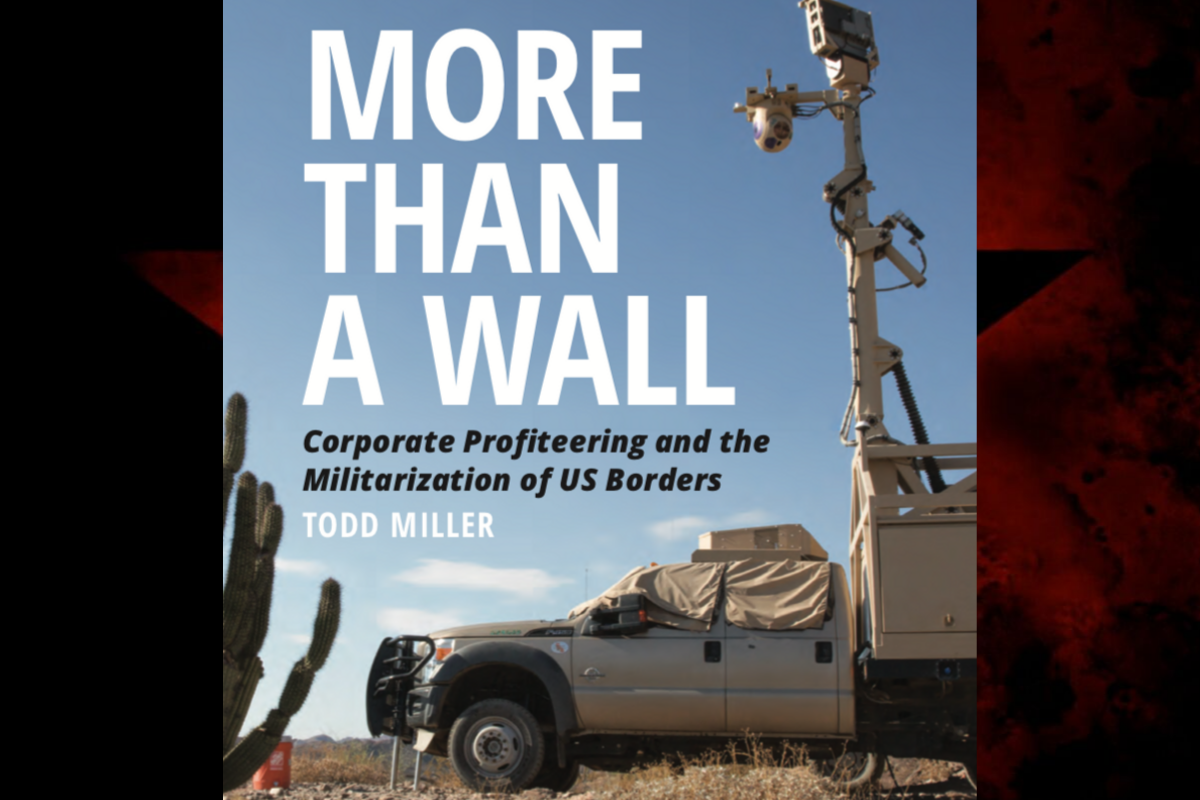

On Monday, international research group Transnational Institute (TNI) shared a new report where it said that some of the world’s biggest arms firms have been shaping U.S. border policy since the 1990s. The result, according to the report, has been a significant increase in budgets for border militarization.
Called “More Than a Wall: Corporate Profiteering and Border Militarization,” the report noted that companies like General Dynamics, Northrop Grumman, Lockheed Martin, Raytheon and Boeing “make up a border-industrial complex which poses the biggest obstacle to a humane and compassionate response to migration,” a media release from TNI explained.
“The report shows that the influence of the border-industrial complex has led to more than a doubling of budgets in the last 15 years ($9.1 billion in 2003 to $23.7 billion in 2018) and an incredible overall 1875% increase since 1990 (when it stood at only $1.2bn). It has also solidified a predominately militarized response to migration in which the U.S. government continuously fortifies the border with the latest military technology rather than address the underlying causes of migration,” the release stated.
The TNI researched looked into contracts by U.S. Customs and Border Protection (CBP) as well as the political donations and activities of corporations. Here are some the report’s conclusions:
- “Between 2006 and 2018, CBP issued contracts worth $26.1 billion which exceed the accumulated Immigration and Naturalization Service (INS) budgets from 1975 to 1998.”
- “The report identifies 14 companies as the giants in the border security business. These are Accenture, Boeing, Elbit, Flir Systems, G4S, General Atomics, General Dynamics, IBM, L3 Technologies, Lockheed Martin, Northrop Grumman, PAE, Raytheon, UNISYS. While dominated by the arms industry, they also include security and IT firms and one major consultancy firm (Accenture).”
- “One contract in 2009 issued to Lockheed Martin of $945 million for maintenance and upkeep of surveillance planes was equal to the total entire border and immigration enforcement budgets from 1975 to 1978 (around $923 million).”
- “The major CBP contract winners Boeing, Lockheed Martin, General Atomics, General Dynamics, and Raytheon are also the biggest campaign contributors to members of the Congress Appropriations Committee and Homeland Security Committee responsible for budgets and policy related to borders. Between 2006 and 2018, these corporations that provide border security services gave $27.6 million and $6.5 million to the Appropriations and Homeland Security Committee members respectively. While this lobbying also relates to military expenditure, border contracts are also central to the same corporations’ business.”
- “Many of the same border security corporations firms are also the most active in lobbying within Congress. In 2018, the largest border and immigration budget in US history followed intense lobbying by representatives of these firms (General Dynamics lobbied 44 times, Northrop Grumman 19, Lockheed Martin 41 and Raytheon 28, in addition to lobbyists by other border-security giants including L3 Technologies, IBM, Palantir, CoreCivic and Geo Group).”
- “Between 2003 and 2017, at least four CBP commissioners and three DHS Secretaries went onto homeland security corporations or consulting companies after leaving government.”
The report was co-sponsored by No More Deaths, an humanitarian aid organization that works on the U.S.-Mexico border.
“U.S. border policies, over the past three decades, have continued to push migration further and further into these deeply militarized zones,” Hannah Taleb of No More Deaths said in the media release. “This has not only boosted corporate profits but also caused untold human suffering. No More Deaths has decided to co-sponsor this new report because of the important link between U.S. Customs and Border Protection spending and the massive crisis of death and disappearance of migrants in the U.S. borderlands.”
The full report is below:



[…] Click here to view original web page at https://www.latinorebels.com […]